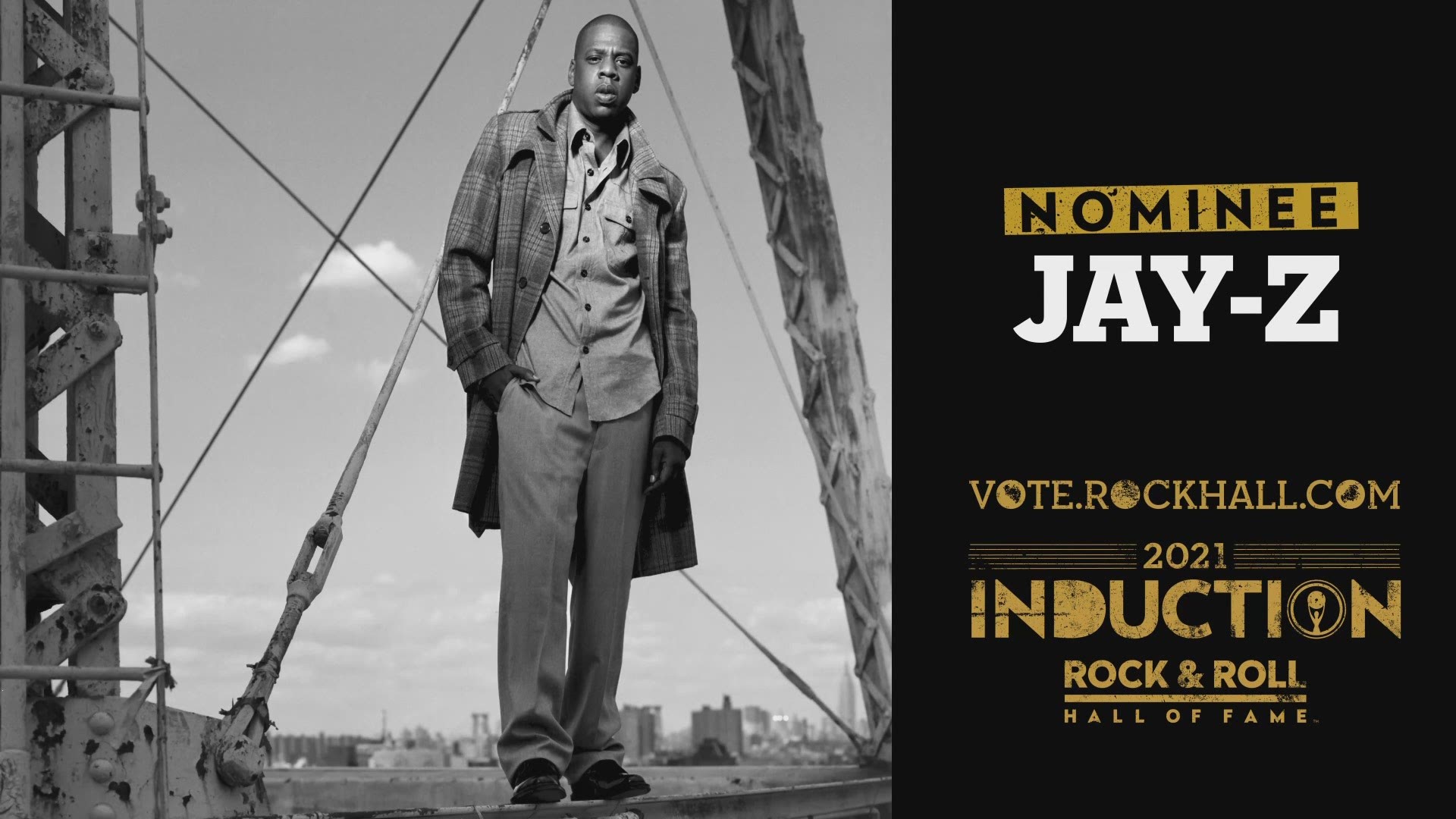Rock and Roll Hall of Fame announces 16 induction nominees for 2021
The 2021 inductees will be revealed in May after the voting process is complete. The induction ceremony will take place in Cleveland this fall.

The wait is over! The Rock and Roll Hall of Fame in Cleveland has unveiled its list of 16 nominees who are eligible for induction in 2021. Seven first-time nominees made the list, including:
- JAY-Z
- Mary J. Blige
- Foo Fighters
- Dionne Warwick
- Iron Maiden
- The Go-Go’s
- Fela Kuti
The other nine have been nominated before, but weren't previously selected for induction. These include:
- Kate Bush
- DEVO
- Chaka Khan
- Carole King
- LL Cool J
- New York Dolls
- Rage Against the Machine
- Todd Rundgren
- Tina Turner
Note: Scroll through the chapters below to read in-depth bios of each nominee.
If selected, Carole King and Tina Turner will be the second and third female artists to be inducted twice. Stevie Nicks was the first to achieve that honor back in 2019. Dave Grohl could also become a two-time inductee if the Foo Fighters are also chosen.
“This remarkable ballot reflects the diversity and depth of the artists and music the Rock and Roll Hall of Fame celebrates,” says John Sykes, Chairman of the Rock and Roll Hall of Fame Foundation. “These nominees have left an indelible impact on the sonic landscape of the world and influenced countless artists that have followed them.”
Who will be the next group to join rock ‘n’ roll royalty? The inductees will be announced in May. The 2021 induction ceremony will follow during a yet-to-be-announced date this fall in Cleveland. Ticket information is not yet available.
Your vote can also make an impact on which inductees are selected. Cast your ballot in the fan vote HERE. Voting is open today through April 30. The top five artists selected by the public will comprise the “fan’s ballot,” which will then be tallied with the other ballots when selecting the class of 2021.
MARY J. BLIGE Subtitle here
Year first eligible: 2018
Previous nominations: First-time nominee

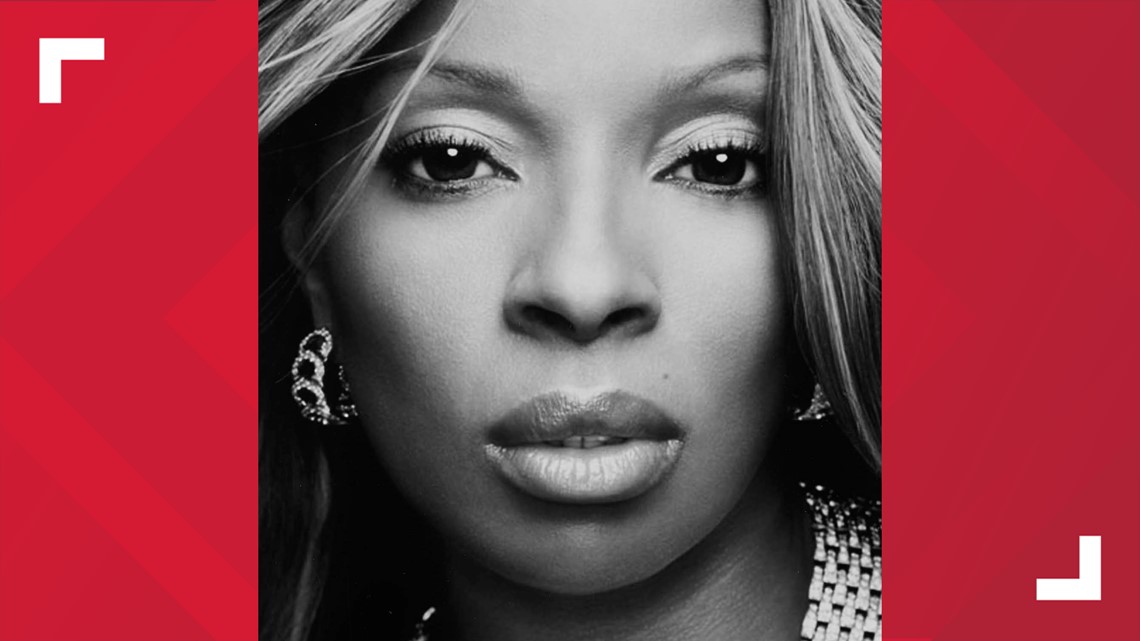
The Queen of Hip-Hop Soul, Mary J. Blige flipped the R&B world on its head with her groundbreaking 1992 debut album What’s the 411? Since then, her anthems of resilience and empowerment have inspired a legion of loyal fans while influencing virtually every R&B artist of the last 20 years, including Aaliyah, Beyonce, Mariah Carey, and SZA. Her career dominance reveals impressive longevity – each of her 13 albums have reached the Top 10, earning nine Grammys and selling more than 50 million albums.
Blige signed with Uptown Records in the early 1990s, becoming the label’s youngest and first female artist. Her debut singlehandedly created the genre of hip-hop soul and produced number one R&B hits “Real Love” and “You Remind Me.” Her image – oversized jerseys, backwards baseball hats, and combat boots – introduced a new look to R&B music, and her lyrics embraced a realness that connected with fans, especially women. Her mid-1990s hits with the Notorious B.I.G., Method Man, and JAY-Z created the blueprints for R&B/hip-hop collaborations for decades to follow.
Blige emerged as a songwriter with hits “Be Happy” and “My Life” from her sophomore effort My Life, while her 1996 hit “Not Gon’ Cry” showcased the emotional ache of Blige’s affecting vocals. The 2000s ushered in more success with number one hits “Family Affair” and Grammy-winning “Be Without You,” the latter of which spent 15 weeks at number one on the R&B charts. Blige continues to crank out hits, including her ode to unapologetic happiness “Just Fine,” the critically acclaimed London Sessions, and collaborations with Inductees Ray Charles, Smokey Robinson, and Quincy Jones. In 2018, she received two Oscar nominations for the film Mudbound – the first person nominated for both acting and original song in the same year.
Blige’s music echoes our experiences with love and life. She helps us move on, move out, and move up. She’s the much-needed soundtrack to our heartache, our vulnerability, and our courage to refuse to accept anything less than we deserve. Long Live Queen Mary J!
KATE BUSH Subtitle here
Year first eligible: 2004
Previous nominations: 2018, 2021

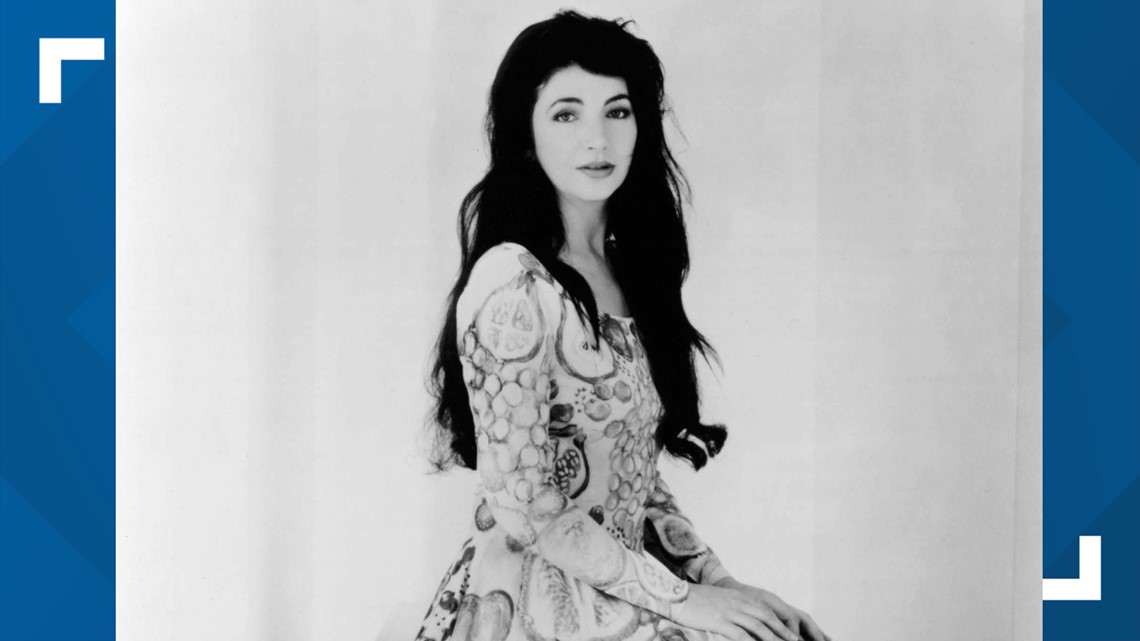
Kate Bush creates music that is at once spellbinding, ambitious, complex and lush. A visionary, Bush steered the course of her career from its infancy, fighting her record label for her debut single and maintaining control of her eclectic musical aesthetic by establishing a home recording studio and her own publishing and management companies. Bush burst open doors for women artists to experiment more radically with their music, image, and theatricality, inspiring Björk, Tori Amos, Solange, St. Vincent, and countless others.
Bush's thematic allusions to literature, myth, cinema, and history — combined with storytelling and an early use of sampling — won her hip-hop admirers including Tupac and Outkast's Big Boi. The esoteric Emily Brönte-inspired debut single “Wuthering Heights” from her inaugural album The Kick Inside (1978) made Bush an overnight sensation as the first female artist to reach number one on UK charts with a self-written song. The album was soon followed by 1978’s Lionheart and Bush’s first and only concert tour — “The Tour of Life” — described by The Guardian as an “extraordinary, hydra-headed beast” that combined music, dance, theatre, poetry, mime, burlesque and magic. The show’s 17 costume changes and demanding choreography led Bush to become one of the first musicians to use a wireless headset microphone. This novel approach to stage performance, along with her stylized music videos and short films, was acknowledged by Elton John as “a benchmark for people’s shows in the future.”
Bush’s seventh studio album The Red Shoes (1993) marked the beginning of a 12-year hiatus before her return with the critically acclaimed double album Aerial (2005). In 2014, Bush returned to the live stage — 35 years after “The Tour of Life” — for a concert residency at London’s Hammersmith Apollo. Tickets sold out in 15 minutes, and the acclaim that followed drove eight of her albums to chart simultaneously — another first for women in rock. Singer, writer, multi-instrumentalist, and producer, Kate Bush is not only a rock superstar, but legend.
DEVO Subtitle here
Year first eligible: 2003
Previous nominations: 2019

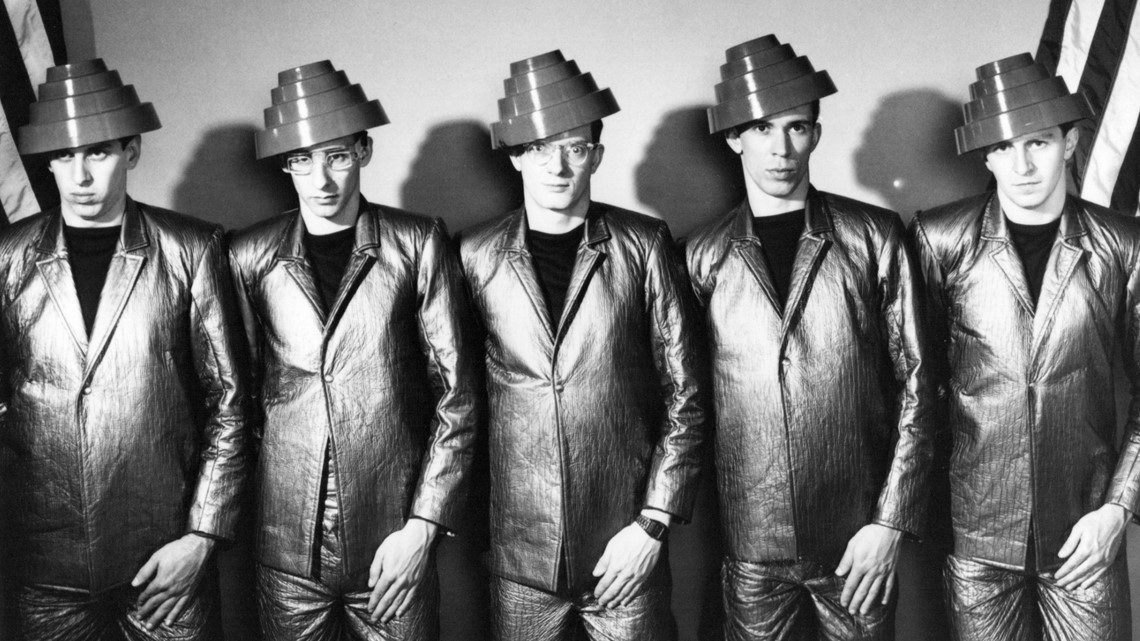
Members included: Bob Casale, Gerald Casale, Bob Mothersbaugh, Mark Mothersbaugh, Alan Myers
DEVO = De-EVOlution. Are we regressing as a culture instead of moving forward? In 1970, the students who would go on to form Devo asked themselves this very question when they witnessed the infamous May 4th Kent State shootings. At that moment Devo was born as equal parts art project, performance art, rock and roll satire, and punk band. They produced a sound that was fresh to the world, a wild amalgam of sharp-edged punk rock guitar angst, Kraftwerkinspired synthesized modernity, jagged motoric rhythms, and detached spoken word vocalizations. The primary line-up featured two sets of brothers, Bob (guitar) and Gerald (bass) Casale, and Bob (guitar) and Mark (keyboards) Mothersbaugh, along with Alan Meyers (drums).
Their early performances around Akron, Ohio allowed them to develop their songs, performance routines (hazmat suits), and stage characters (Booji Boy). In 1978 they recorded their debut LP with Brian Eno and David Bowie both producing. Devo’s cover of the Rolling Stones’ “(I Can’t Get No) Satisfaction” showed them embracing rock history while simultaneously tearing it down – taking one of the key rock anthems of the 1960s and turning it into a nervous rhythmic groove for the coming decade. Right on time, Devo released Freedom of Choice in 1980 and hit the pop charts with “Whip It!” The band’s performance art was the perfect fit for the era of music video. Clad in black turtleneck t-shirts with bright red energy domes on their heads, they took the world by storm. But their constant use of humor and satire hid the biting criticism of modern society on tracks like “Freedom of Choice” and “Gates of Steel.” Devo set up the punch lines and expected their audiences to fill in the blanks. This technique often left people asking what they were all about. But for those who got the message (like Nine Inch Nails and Daft Punk), Devo became a beacon guiding an entire generation of new wave, industrial, and electronic artists into the future.
FOO FIGHTERS Subtitle here
Year first eligible: 2021
Previous nominations: First-time nominee
Members included: Dave Grohl, Taylor Hawkins, Rami Jaffee, Nate Mendel, Chris Shiflett, Pat Smear


Foo Fighters carry the torch of rock authenticity with infectious hooks, in-your-face guitar riffs, monster drums, and boundless energy. When Nirvana disbanded in 1994, Dave Grohl had years of original songs ready to go and recorded the self-titled Foo Fighters debut album in one week. Few artists in rock history have recorded every track on an album, from drums all the way up to vocals (save for one guitar track), and few drummers have stepped down from the throne into the role of singer-songwriter-bandleader.
Foo Fighters churn pop, prog, metal, punk, and hard rock into a polished – but still raw – version of modern rock. Some consider Foo Fighters a “guitar” band, because over time, they have expanded into a thick wall of guitar sounds, with Grohl playing straightforward chords, Pat Smear adding large atmospheric sounds, and Chris Shiflett crafting melodies that complement the vocals. Others consider them a “drums” band – after all, they do have Dave Grohl and Taylor Hawkins, two hard-hitting monster drummers with a keen sense of musicality and ability to construct the perfect drumbeat for each song’s needs.
Foo Fighters continually reshape their production techniques. They recorded There Is Nothing Left to Lose (1999) as a trio in the basement of Grohl’s Virginia home with no record company to oversee the process or inhibit the flow of creativity. 2005’s In Your Honor became a double album – one filled with the classic, heavy Foo Fighters sound, and one that showed the band’s softer, acoustic, introspective side. They recorded Wasting Light (2011) on analog tape to recapture the feel and sound of tiny imperfections and to track everything “live” – without the slickness of computer-based production. Through these studio innovations, they updated the classic rock values of authenticity and rawness for modern ears.
Foo Fighters have become the go-to rock band of the 21st century, performing two soldout, back-to-back nights at London’s Wembley Stadium, multiple Grammy award ceremonies, David Letterman’s final Late Show episode, and President Joe Biden’s 2021 inauguration celebration.
THE GO-GO'S Subtitle here
Year first eligible: 2006
Previous nominations: First-time nominee
Members included: Charlotte Caffey, Belinda Carlisle, Gina Schock, Kathy Valentine, Jane Widlin

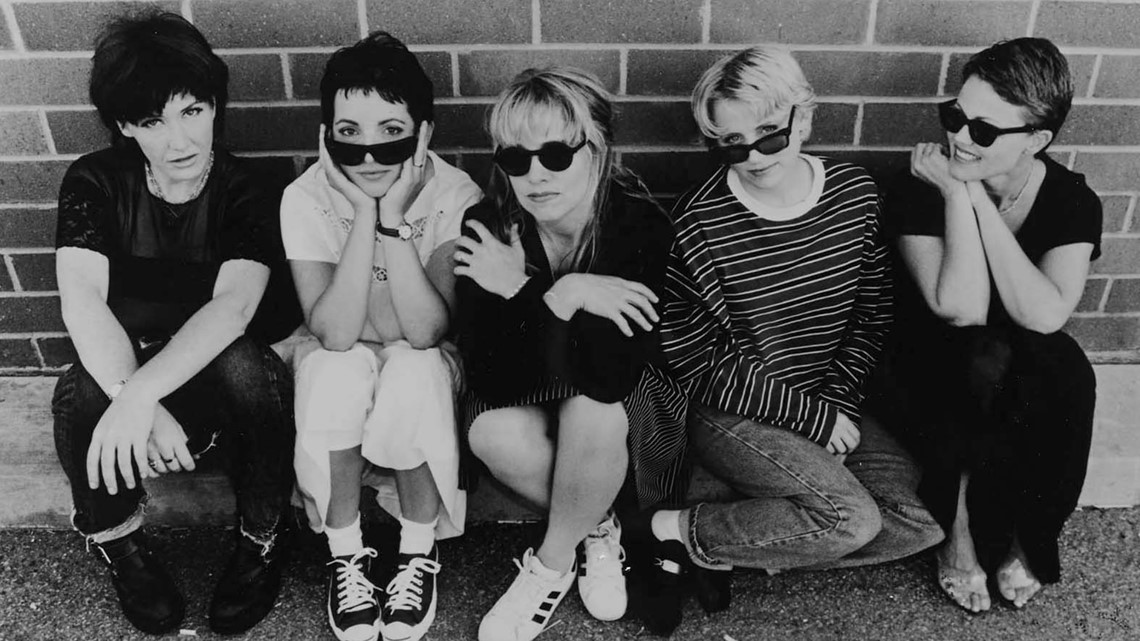
As the most successful all-woman rock band of all time, the Go-Go’s catchy, well-crafted songs formed a bridge between the brash urgency of L.A. punk and the dark melodies of new wave pop.
Formed out of the diverse and egalitarian punk scene in Los Angeles in 1978 with Belinda Carlisle on lead vocals and Jane Wiedlin on rhythm guitar and vocals, the core lineup of the band solidified over the next few years with the additions of lead guitarist and keyboardist Charlotte Caffey, drummer Gina Schock, and bassist Kathy Valentine. Known for their raw and energetic live shows, the Go-Go’s circumvented record label sexism and signed with IRS Records in 1981. Their debut album Beauty and the Beat was released the following year and became the first (and, to date, only) album by an all-woman band that played its own instruments and wrote its own songs to top the Billboard 200 albums chart.
Despite a shift towards a more melodic new wave sound, the band’s D.I.Y. punk roots remain evident in hits like “We Got the Beat” and “Our Lips Are Sealed.” The Go-Go’s second and third studio albums, Vacation (1982) and Talk Show (1984), furthered the band’s success with the singles “Vacation” and “Head over Heels.” Though in heavy rotation on MTV, their songs (primarily composed by Caffey and Wiedlin) had weighty lyrics belied by their sunny melodies and a timelessness that set the band apart from many of their 1980s counterparts.
Personality conflicts and personal demons led to the band’s breakup in 1985, but the Go-Go’s have reunited periodically to record and tour. In recent years, the band has been celebrated with the Broadway jukebox musical Head Over Heels and chronicled in the Showtime documentary The Go-Go’s (2020). For the documentary’s soundtrack, the band reconvened virtually to record their first new song in 19 years, “Club Zero.” The Go-Go’s influence is seen in countless artists, including Bikini Kill, Green Day, and Nirvana.
Iron Maiden Subtitle here
Year first eligible: 2005
Previous nominations: First-time nominee
Members included: Clive Burr, Paul Di'Anno, Bruce Dickinson, Janick Gers, Steve Harris, Nicko McBrain, Dave Murray, Adrian Smith, Dennis Stratton

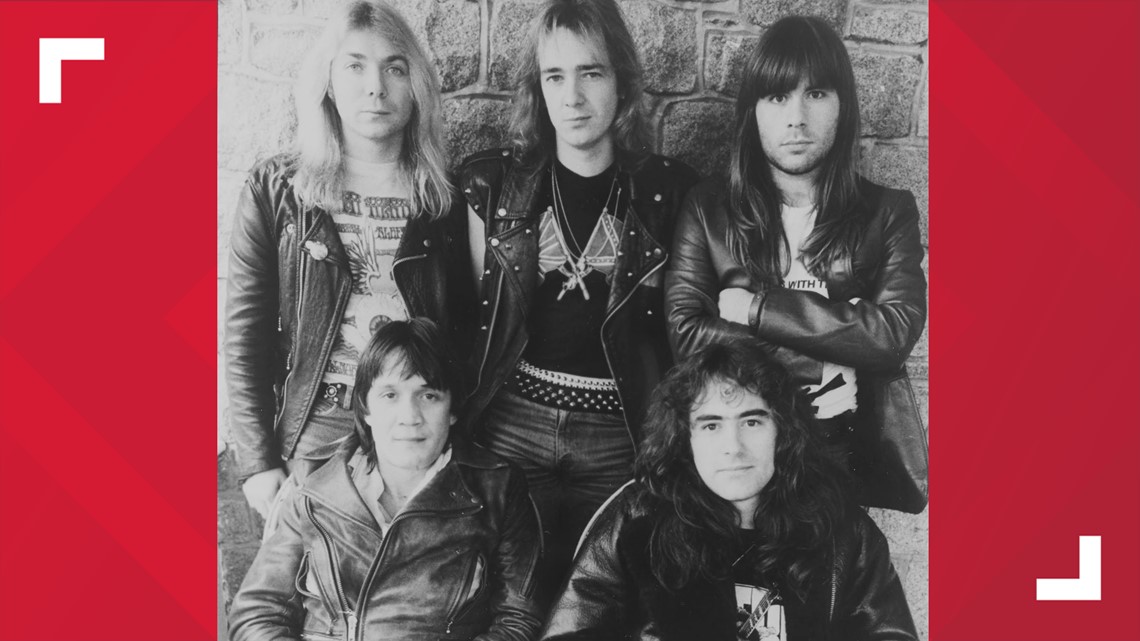
During the 1980s, Iron Maiden released seven high octane albums that solidified them as one of rock’s biggest bands – creating the blueprint for how heavy metal bands should look, sound, and tour. With their blend of punk, early metal, and progressive rock fused into a blistering assault of guitars, a driving rhythm section and soaring vocals, they could switch gears at a moment’s notice to take audiences on an expressive atmospheric journey.
Formed in 1975 by bassist Steve Harris, the band’s lineup shifted numerous times before the release of their self-titled debut in 1980. The album features vocalist Paul Di’Anno growling punk rock blasters like “Iron Maiden,” along with stunning technical guitar and bass performances. The cover art featured Maiden’s punk rock inspired zombie “mascot” Eddie (who has appeared on every cover since), and their iconic stylized logo, creating an entire fantasy world for fans. In 1981, Iron Maiden was the first metal band played on MTV. With growing success and recognition, the 1982 lineup of Harris, guitarists Dave Murray and Adrian Smith, drummer Clive Burr, and new vocalist Bruce Dickinson recorded what is widely considered one of the greatest metal albums of all time, The Number of the Beast. The title track features one of the greatest blood curdling screams in rock history while the band rages at a furious pace. The album caused a massive controversy and cries of “satanism!” from religious groups while simultaneously enrapturing a massive teenage fanbase.
The addition of new drummer Nicko McBrain in 1982 solidified the classic lineup, and the band’s next four albums – Piece of Mind (1983), Powerslave (1984), Somewhere in Time (1986), and Seventh Son of a Seventh Son (1988) – continued expanding the musical boundaries of metal music. Lauded as a foundation of the New Wave of British Heavy Metal, Iron Maiden continues to make groundbreaking albums (with over 100 million sold), tour the world (over 2,000 shows played, selling out stadiums and arenas), and influence generations of fans and fellow musicians, including Metallica, Dream Theater, and Coheed and Cambria.
JAY-Z Subtitle here
Year first eligible: 2021
Previous nominations: First-time nominee

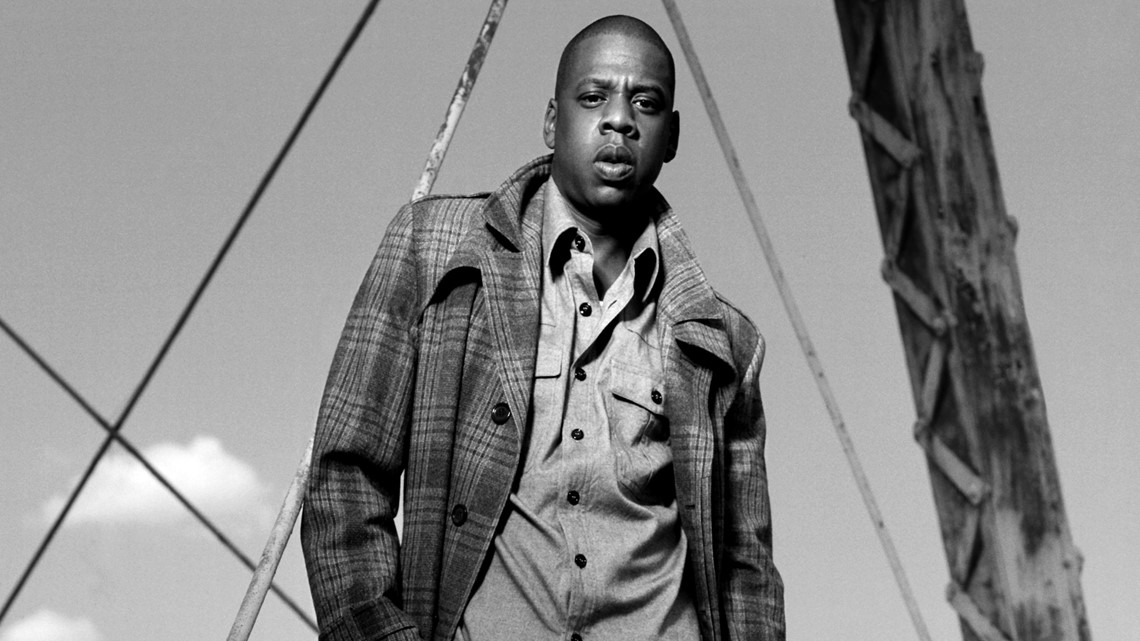
JAY-Z is considered by many to be the greatest rapper alive. His accolades include 14 number one albums (most ever by a solo artist), 22 Grammys (most in hiphop history), and first rapper inducted into the Songwriters Hall of Fame (2017).
Born Shawn Carter in Brooklyn, JAY-Z’s autobiographical approach to songwriting – a balance of braggadocious confidence and comfortable vulnerability – propelled his popularity. His earliest recordings date back to 1986, but it was his groundbreaking debut album Reasonable Doubt (1996) that turned heads when it was released on his independent label Roc-A-Fella Records. 2001’s The Blueprint earned the coveted Five-Mic review from The Source, as well as his first Top 10 single “Izzo (H.O.V.A.).” JAY-Z announced a short-lived retirement following the release of The Black Album (2003), which included the Rick Rubin-produced “99 Problems.” In 2004, he became president of Def Jam Records, where he signed Rihanna, Kanye West, and J. Cole. JAY-Z’s next few years included a mash-up album with Linkin Park, the Grammy-winning ode to New York City “Empire State of Mind,” and a chart-topping album with Kanye West. He proved that hip-hop could pack stadiums when his Magna Carta tour sold out in minutes. In 2018, he released a joint album with his wife and fellow megastar Beyoncé, Everything Is Love.
As JAY-Z puts it, “I’m not a businessman, I’m a business, man.” His profound impact extends well beyond music, including fashion, sports ownership, and music streaming, and in 2019, he became hip-hop’s first billionaire. He’s hosted political fundraisers, performed at presidential inaugurations, and has been an outspoken advocate for civil rights. His 2017 song “The Story of O.J.” shined a spotlight on systemic racism and was nominated for three Grammys, including Record of the Year. Throughout it all, JAY-Z has maintained authenticity with hip-hop purists while still achieving incomparable commercial success. Many have tried, but no one has come close to knocking him off his throne.
CHAKA KHAN Subtitle here
Year first eligible: 2004
Previous nominations: 2016, 2017


Chaka Khan (born Yvette Marie Stevens in Chicago) came to prominence with the innovative funk/rock group Rufus in the 1970s. With a voice possessing both seductive fire and sweet smoke, Khan was equally ferocious and feminine, and she was Rufus’ secret weapon. Funk queen, rock goddess, jazz singer, disco diva – Khan has been called, and has transcended, all of the above. At a time when audiences for rock and soul were splitting into different camps, Khan’s voice represented the racial and social integration at the heart of rock and roll.
With her incredible vocal range and mastery of dynamics, Khan has recorded durable and powerful music for close to five decades. After Rufus’ long run of hits, Chaka Khan broke out on her own in 1978 with Ashford & Simpson’s “I’m Every Woman,” a successful mix of rock and disco. She continued to master the rhythms of every era from rock to funk to hip-hop. Throughout her career, Khan has also showcased her jazz roots on albums like Echoes of an Era (1982) and ClassiKhan (2004). Her landmark solo album, 1984’s I Feel For You, was a creative and exciting mix of funk, synth dance rhythms, and hip-hop on Prince’s title track and the stunning ballad “Through the Fire.” She continues to be one of the most prolific and eclectic singers around, covering songbook standards and soul classics to equal acclaim, and earning the 2008 Grammy for best R&B album with Funk This, her tenth Grammy win. Khan’s most recent album, Hello Happiness, was released in 2019.
Inspired by pioneering female artists like Aretha Franklin and Joni Mitchell, Khan remains one of the mightiest and most influential voices in music. It is impossible to imagine today’s streetwise but sensual hip-hop-soul divas without Khan; her influence allowed Mary J. Blige, another ardent fan, to forge the template, paving the way for other formidable women from Erykah Badu to Janelle Monáe, as well as versatile, powerhouse vocalists like Sam Smith. The recordings of Chaka Khan have endured for decades and continue to inspire fellow artists and fans alike.
CAROLE KING Subtitle here
Year first eligible: 1986
Previous nominations: 1989

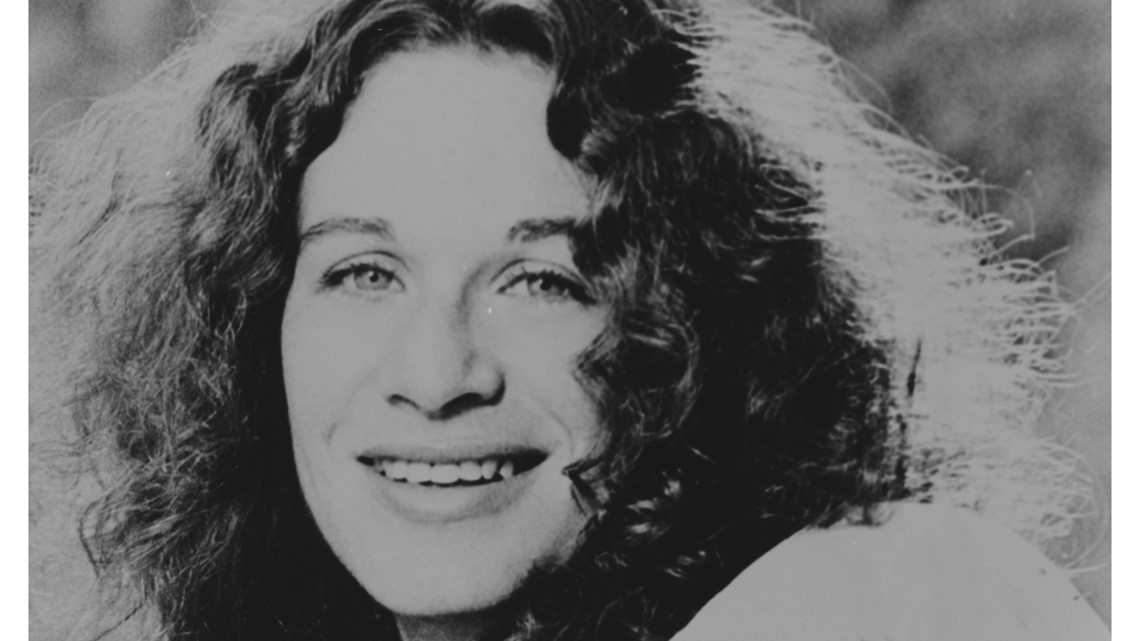
After writing the soundtrack of the 1960s, Carole King wove a tapestry of emotion and introspection as a singer-songwriter in the 1970s. Her solo work was a clarion call to generations of female artists and millions of fans – giving them confidence and voice. King has too many accolades to list – six Grammys, a 2013 Library of Congress Gershwin Prize, a 2015 Kennedy Center Honor, and beyond. She is already a onetime Inductee with former husband and songwriting partner Gerry Goffin, with whom she cowrote numerous iconic songs. Many, like the Shirelles’ “Will You Love Me Tomorrow” – for the first time ever in the music industry – spoke to, and for, young women.
King’s time as a Brill Building-style pop songwriter would be enough to make her a legend, but she was just getting started. With the launch of her solo career, she emerged as a strong, pensive singer-songwriter and Laurel Canyon star. Her sophomore release Tapestry (1971) swept the Grammys. On the Tapestry version of “Will You Love Me Tomorrow,” the danceable rhythms and full production of the girl group sound is replaced by aching piano chords, subdued tempo, and sparse instrumentation. Above this texture, her voice – honest and coarse, simple and beautiful – calls out from the place of a grown woman. The personal style of King’s performance on that track, on new songs such as “Beautiful,” and on subsequent albums like Fantasy (1973) and City Streets (1989), has connected with listeners – particularly women – because it came from a place of unabashed vulnerability.
Carole King’s life is a testament to perseverance and creativity, so much so that Beautiful: The Carole King Musical ran for five years on Broadway, scoring its own Grammy and two Tony awards. Everyone from the Beatles to Lady Gaga have covered her songs, and she defined what a singer-songwriter is for all who followed. King spent her career taking the concerns of women and girls seriously. By singing about her personal desires, heartaches, triumphs, and failures, Carole King gave women a voice and the confidence to change their own lives – and to collectively change our entire world.
FELA KUTI Subtitle here
Year first eligible: 1996
Previous nominations: First-time nominee


Multi-instrumentalist and Afrobeat pioneer Fela Anikulapo Kuti (born Olufela Olusegun Oludoton Ransome Kuti) fused music and politics to become a singular global revolutionary voice. Fela was born in 1938 into a politically active and musical Nigerian family; his father founded the Nigeria Union of Teachers and had a passion for piano and his mother was known for her anti-colonial, Nigerian home rule movement advocacy. In 1961, while studying music in London, Fela formed his first band, Koola Lobitos, and quickly became a fixture on the London club scene. He later toured the United States, where he was influenced by soul and funk legends James Brown and Sly Stone. Reflecting the musical and cultural flavors of Africa and Black America’s Civil Rights Movement, Fela fused elements of traditional West African highlife, jazz, and soul music and dubbed this rhythmic hybrid “Afrobeat.”
Throughout his career, Fela showcased his love for jazz and soul on hits like “Water Get No Enemy,” “Expensive Sh*t,” and “Beast of No Nation.” It was with the album Alagbon Close (1974) that Fela addressed the ills of the Nigerian government openly in his music. His revolutionary Pan African ideology was even depicted in his album covers, and he focused his music on provoking political change. Although vilified by the press and jailed for his anti-corruption stance, Fela was celebrated as a hero in Africa, and that soon stretched to a global reach.
“As an artist, the whole idea about your environment must be represented in music,” Fela said. “So, I think, as far as Africa is concerned … music has to be for revolution.” Even 24 years after his death in 1997, Fela Kuti’s innovative music, revolutionary message, and generational impact continue to represent the indomitable and evolving spirit of rock and roll.
LL COOL J Subtitle here
Year first eligible: 2010
Previous nominations: 2010, 2011, 2014, 2018, 2019

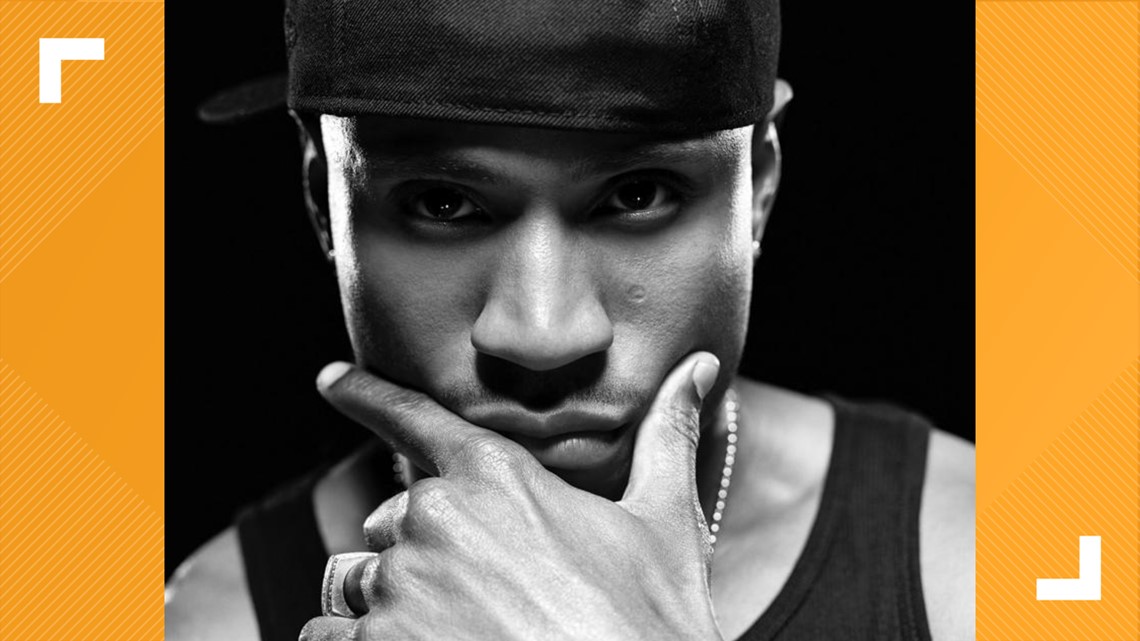
LL Cool J has been called the Little Richard of hip-hop: combining youthful exuberance, massive charisma, and incredible musical talent, they launched their respective genres of rock and roll to fans around the world. LL was still a teenager when he became the face of Def Jam records – his 1985 Radio was the label’s first album. He ushered in hip-hop’s second wave with hardhitting singles like “I Need a Beat,” “I Can’t Live Without My Radio,” and “Rock the Bells.” LL’s work with Def Jam paved the way for future label mates Public Enemy, the Beastie Boys, and Slick Rick.
Through the 1980s LL blazed a trail from Queens to the nation, becoming one the best-selling hip-hop artists of the decade. In 1987, he became the first rapper to top the R&B charts with “I Need Love.” His 1991 Grammy-winning anthem “Mama Said Knock You Out” was a KO heard around the world, while singles “Going Back to Cali,” “Around the Way Girl,” “Hey Lover,” and “Doin’ It” became huge radio hits.
LL’s voice is powerful, his flow intimidating, and his swagger mesmerizing. Michael Jackson, inspired by LL’s “I’m Bad,” recorded “Bad” after meeting him in person. LL is equally comfortable with hardcore battle raps (Eminem calls him one of his biggest influences) as he is with sexy love songs (hence the name Ladies Love Cool James). If you didn’t love LL, you wanted to be LL.
LL Cool J epitomizes the entrepreneurial musician. He leveraged his music career into successful ventures in movies, television, fashion, and fitness. The empires run by Beyoncé, JAY-Z, 50 Cent, and Diddy owe him a debt of gratitude. He didn’t open the door – he smashed it wide open, creating opportunities for anyone who picked up a mic.
NEW YORK DOLLS Subtitle here
Year first eligible: 1999
Previous nominations: 2001
Members included: David Johansen, Arthur Kane, Billy Murcia, Jerry Nolan, Sylvain Sylvain, Johnny Thunders


The New York Dolls were punk rock before most music fans had ever even heard of punk, and they inspired virtually every punk band who followed in their wake. Formed in 1971, the Dolls combined the swagger of the Rolling Stones, the raw sounds of the Stooges, the glam of David Bowie and T. Rex, and the pop influence of girl groups into their own brand of take-noprisoners rock and roll that was unlike anything anyone had seen or heard before.
While many labels were scared away by the band’s androgynous wardrobes and unabashed vulgarity, Mercury Records signed the Dolls and released their raucous debut album New York Dolls in 1973. Recorded by the band’s classic lineup – vocalist David Johansen, guitarists Johnny Thunders and Sylvain Sylvain, bassist Arthur Kane, and drummer Jerry Nolan – and produced by Todd Rundgren, New York Dolls is widely regarded as one of the finest debut records in rock and among the most influential of all time. Songs like “Personality Crisis,” “Looking for a Kiss,” and “Trash” are gritty proto-punk masterpieces, with Johansen's lyrics addressing dark subjects like adolescent heartbreak, teen alienation, and insanity, delivered with a campy girl group attitude. Featuring Thunders' untamed lead guitar growl interlocked with Sylvain's complementary rhythm playing, along with the messy but dynamic attack of Kane and Nolan, these groundbreaking tracks directly inspired the punk rock movement of the 1970s. The band’s 1974 follow-up Too Much Too Soon, produced by the legendary George "Shadow" Morton, was packed with even more brilliant glitter rock anthems and further cemented the Dolls’ place in rock history.
While the New York Dolls never achieved major commercial success, both of their early studio albums received glowing reviews, and music critic Robert Christgau called the group “the best hard-rock band since the Rolling Stones.” With their seminal recordings and shambolic live performances, the Dolls created some the most enduring and influential music in rock history and had an inordinate impact on generations of musicians, from the Sex Pistols to the Ramones, from KISS to Guns N' Roses, from the Smiths to the Replacements.
RAGE AGAINST THE MACHINE Subtitle here
Year first eligible: 2017
Previous nominations: 2018, 2019
Members included: Tim Commerford, Zack de la Rocha, Tom Morella, Brad Wilk

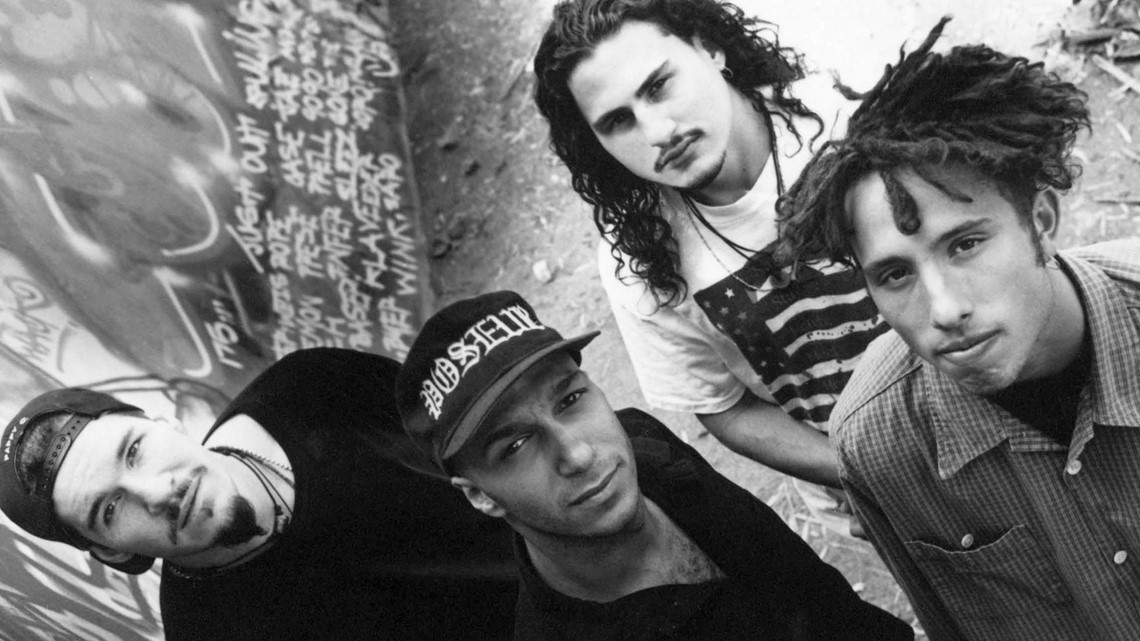
Every aspect of Rage Against the Machine throttled the status quo. Formed in 1991, the Los Angeles quartet took aim at oppressive systems of power – cultural, political, economic, and otherwise – and did everything they could to ignite a revolution.
Musically, Rage Against the Machine’s subversion mixed hip-hop, punk, metal, funk, and rock. The band’s self-titled 1992 debut and 1996’s Evil Empire ushered rap-rock into the mainstream and established Rage Against the Machine as a powerful force that harnessed strength from defying sonic boundaries. Zack de la Rocha’s stinging, hip-hop-inspired vocals drew on his days fronting a hardcore band. The rhythm section of bassist Tim Commerford and drummer Brad Wilk heightened the urgency of de la Rocha’s delivery with deep, heavy grooves grounded by a pummeling backbeat – no rhythm section could maximize volume while staying in the pocket more skillfully. Guitarist Tom Morello took the rap-rock hybridization further than contemporary groups. He used pedals, toggle switches, and alternative tunings to incorporate effects normally created by hip-hop turntables, samplers, and synthesizers into the language of heavy metal through Rage’s driving riffs and iconic solos.
Editor's note: The music video above contains offensive language.
Rage Against the Machine were part of a musical tradition indebted to the MC5, the Clash, and Public Enemy. While plenty of 1990s rock bands supported social justice issues, Rage Against the Machine’s rebellious politics stood head and shoulders above. Onstage and off, the band members gave a voice to the powerless, calling out local and global inequalities, and railing against censorship, corporate cronyism and government overreach. Their lyrics were smart and pointed – “Freedom” highlighted the plight of Leonard Peltier, an imprisoned Native American leader, while “People of The Sun” showed solidarity with tyrannized Mexican citizens. Even today, their lyrics remain relevant. “Killing in The Name,” a stark indictment of racism and police brutality, still resonates deeply in cities across America. Rage Against the Machine forged brazen protest music for the modern world.
TODD RUNDGREN Subtitle here
Year first eligible: 1996
Previous nominations: 2019, 2020


A wizard, a true star – Todd Rundgren can do it all. He’s a singer, songwriter, multiinstrumentalist, in-demand producer, engineer, audiophile, technophile – all to critical acclaim. Rundgren’s influence can be felt in many pockets of rock and roll: power pop (“Couldn’t I Just Tell You”), lo-fi (A Wizard, a True Star), music video production (“Time Heals”), overdubbing (A Cappella), and experimental music (No World Order). Where most artists strive to build one audience, Rundgren has built several devoted fanbases around the world.
A Philadelphia native, Rundgren was influenced by the sound of soul, British rock, vocal harmony, and 1960s singer-songwriters. In 1967, he formed power pop group Nazz and honed his chops as a songwriter, but his curiosity led to more. He joined Albert Grossman’s Bearsville Records as a producer and engineer, a decision that quickly paid off. Rundgren earned his first top 20 hit with “We Gotta Get You a Woman” as part of his debut solo effort Runt (1970). His ambitious 1972 double album Something/Anything? thrust him in the spotlight with iconic hits like “I Saw the Light” and “Hello It’s Me.” Always prolific, in the 1970s and 1980s he released 12 solo albums, nine albums with his progressive rock outfit Utopia, and produced groundbreaking albums for the Patti Smith Group (Wave), Meat Loaf (Bat Out of Hell), Grand Funk Railroad (We’re an American Band), and the New York Dolls (New York Dolls). At each turn, his sound evolved: “I never felt pressure that I had to come back and top what I might’ve done before.”
We can hear Todd Rundgren’s influence in everyone from Prince and Hall & Oates to Björk and Daft Punk. In 2017, Rundgren released White Knight, which includes collaborations with Trent Reznor and Robyn – further demonstrating the wide-reaching impact of one of rock and roll’s truest renaissance men.
TINA TURNER Subtitle here
Year first eligible: 2000
Previous nominations: 1987


Tina Turner is often called the “queen of rock and roll,” a title she earned not just once but twice. The first time, she rose to fame in the 1960s as part of the duo Ike & Tina Turner, belting out soulful rock songs in a non-stop stage show where she danced the audience into a frenzy. But all of that is backstory to the most successful rebirth in the history of rock.
Turner’s early solo work positioned her as a soulful interpreter of country, rock, blues, and disco, but she finally found her voice with 1984’s five-time Platinum album Private Dancer, which included seven hit singles. On the haunting title track, Turner croons deep into the microphone, drawing out the words to pull the listener into her story, eventually belting out the final chorus in a dance of emotions. The swinging rhythms of “What’s Love Got to Do with It” won her three Grammy Awards and became a staple on MTV. Her carefully crafted look – leather skirt, jean jacket, and teased hair – connected her more directly to modern rock and the new generation that was watching.
Turner worked hard to reimagine the role of a Black woman in rock and roll – one not relegated to the edges. A string of duets with male artists, including David Bowie and Mick Jagger, positioned her as equal, and often above, her male counterparts. Turner continued to land hits with “Typical Male,” “The Best,” and “I Don’t Wanna Fight,” and her 1986 autobiography I, Tina – and subsequent biopic – told the story of her career, her past experience with abuse, and her dreams of rock stardom.
Turner continued performing, setting world records for concert attendance and, in 2009, celebrated 50 yearsin music. Despite retirement, her music and stage performances continue to resonate with countless artists, from Whitney Houston and Beyoncé, to Mariah Carey and Annie Lennox – setting the stage for strong female performers. Turner embodies the strength that comes from emotional recovery. Her music and life empower her fans, giving them the courage and spirit to reclaim their own story in their own words. Tina Turner is “simply the best.”
DIONNE WARWICK Subtitle here
Year first eligible: 1988
Previous nominations: First-time nominee

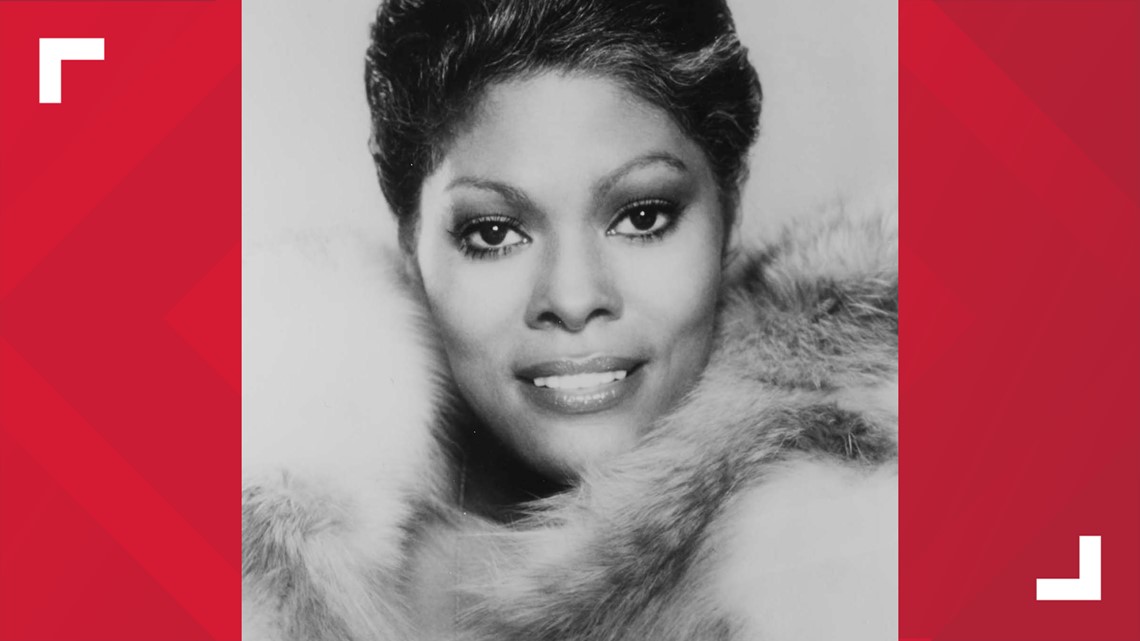
Dionne Warwick is one of the towering figures of popular music. Raised in a family of gospel singers, she received extensive formal vocal training as a young girl. A trip for her sixteenth birthday to see Lena Horne perform at the Waldorf Astoria would prove to be a career-defining moment. Reflecting on this experience in 1996, Warwick recalled, “It was probably the greatest influence on me.” Soon after her debut in 1962, Warwick made an indelible impact by joining forces with iconic songwriting team Burt Bachrach and Hal David. Warwick’s vocal stylings exquisitely complemented the songwriters’ unique and idiosyncratic compositions, her voice as sophisticated as their staccato arrangements and time changes. Her vocal delivery was a defining sound of 1960s cool, with an effortless delivery and soulful tone. Songs like “Walk On By” and “I Say a Little Prayer for You” transported the listener to a different place.
After Bachrach and David’s split in 1973, Warwick saw continued success with other collaborations. In 1974, she teamed up with the Spinners on the number-one smash hit “Then Came You,” a song that perfectly encapsulated the sound of disco in the mid1970s. 1979 saw another huge hit with the Barry Manilow-produced “I’ll Never Love This Way Again,” earning Warwick her third Best Female Pop Performance Grammy. In the 1980s and 1990s, she sang duets with Whitney Houston, Luther Vandross, and Johnny Mathis, among others; the biggest of these – the 1987 number-one hit “That’s What Friends Are For” – featured Elton John, Stevie Wonder, and Gladys Knight. More accolades and Grammys followed – six in total, including a Lifetime Achievement Award in 2019. Warwick continues to tour and recently became a Twitter sensation with her playful tweets directed at artists with “The” in their names. Witty exchanges with Chance the Rapper spawned an upcoming collaboration between the two and the Weeknd. Dionne Warwick’s innovation in song interpretation, combined with a seemingly flawless ability to stay relevant, have made her a mainstay in popular music history.
INDUCTION PROCESS Subtitle here
What's next now that we have these 16 induction nominees? A committee of more than 1,000 people, including former inductees, historians and members of the music industry will vote to select the class of 2021. A fan vote also carries some weight in making the final decision. Those selected for induction will be announced in May.
To be eligible for induction, an individual artist or band must have released their first commercial recording at least 25 years prior to the year of nomination. Factors in determining the inductees are:
- The artist's musical influence on other artists.
- Length / depth of career and body of work.
- Innovation and superiority in style / technique.
2021 marks the 36th annual Rock Hall induction.
NOTE: All bios were provided by the Rock and Roll Hall of Fame.


